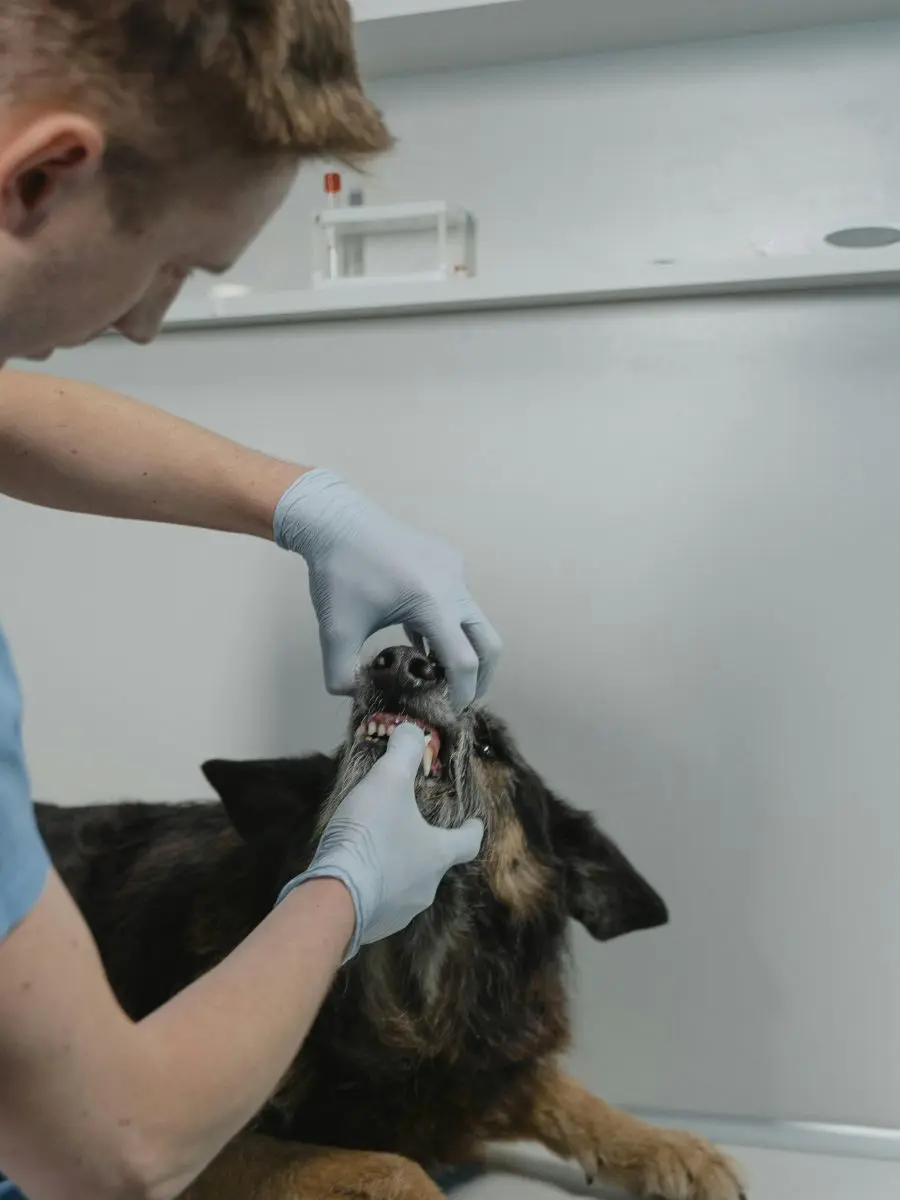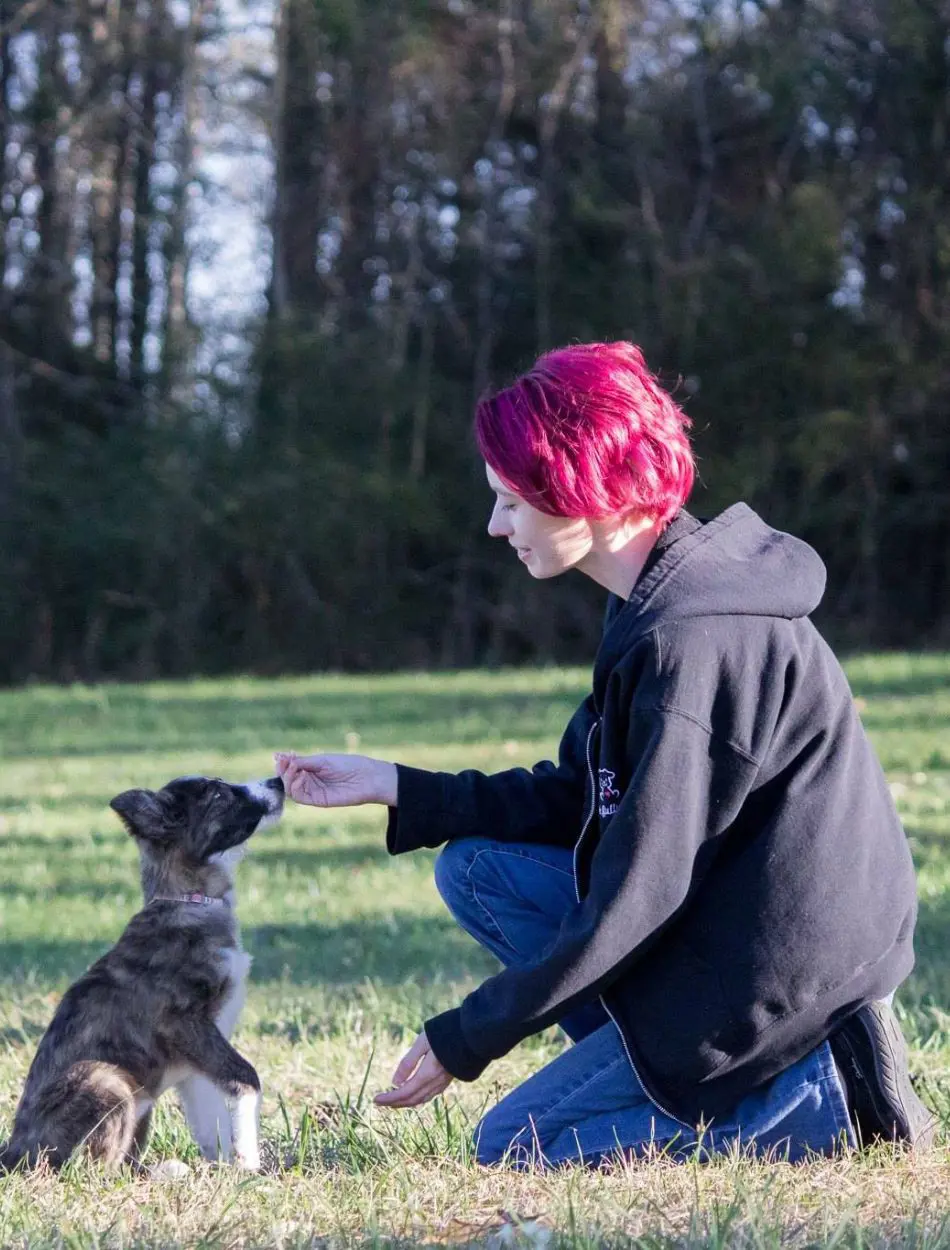18 Signs Your Dog Is Sick

You are the only one who truly understands your favorite dog, and you will be able to spot problems early on. Pets depend on us to detect the subtle and occasionally not-so-subtle cues that something is wrong because they are unable to communicate with us when they are hurt.
If you are a dog owner, do not stop monitoring behavioral changes, their appearance, and their daily routine. Early intervention at the very first sign of disease can save much in suffering, cost, and even lives.
Knowing when to get help fast could be the best way to tell your best friend that you really care about him. This article will discuss the most common symptoms of sickness in dogs.
1. Changes In Appetite
Any apparent change in the loss of appetite for food that your dog was earlier relishing with interest may indicate dental problems, digestive disorders, or even some hidden diseases like cancer or kidney failure.
It is important to monitor such changes and note any other symptoms that may provide additional information about your dog's overall health. If you monitor your canine's appetite and raise significant information, you will assist your veterinarian in making a quicker diagnosis.
You may also notice that your pet is eating quite differently. Symptoms of canines may have a dental problem, either in the gum or in the teeth, including eating very slowly, looking uncomfortable after eating or frequently dropping food from the mouth.
2. Lethargy
Lethargy in dogs can become one of the most prominent and very major red flags that something is wrong with your furry friend's health. One has to follow up on behavior in a canine that usually is full of energy and playfulness but now seems lackadaisical about doing or enjoying their usual activities.
If this low activity lasts for days, then that is a cause for concern. Sometimes, lethargy is serviced by other symptoms that may appear simultaneously, like weight loss, fever, or even loss of appetite, which might give a better clue about the underlying cause.
Knowing your dog's behaviour and energy changes and acting upon gut instinct if something doesn't feel right is key. Keeping your pet healthy and active requires proper nutrition, regular exercise, and visits to the vet, which can prevent many conditions that might cause lethargy.
3. Vomiting

Vomiting is one of the most common symptoms dogs show to indicate that something medically is wrong. It can be anything from something small to possibly something serious.
Increased frequency or more violent vomiting would generally indicate a more serious problem. Still, occasional vomiting probably doesn't matter much because it can be caused by relatively trivial things, like eating too fast or swallowing something that irritates the stomach.
The frequency and appearance of the emesis are important characteristics to note because they may provide very important clues to the underlying problem. Providing your dog with a healthy diet and keeping them away from harmful chemicals will help avoid certain vomiting causes.
4. Diarrhea
In most cases, diarrhea in dogs presents an appeal for a more detailed investigation into the general health condition of the animal. Mostly, it may be a gross sign that there is something wrong with its digestive system.
Periodic occurrences may not be a cause for concern, but the severe or chronic nature of diarrhea can prove that there is a serious health problem. This is an extremely nonspecific symptom that could imitate a lot of diseases, from infection to food allergy, but even more serious conditions like parasites or inflammatory bowel disease.
Frequency, consistency, and color of the stool are very relevant considerations in a dog with diarrhea because they often yield relevant clues about possible causes. Other symptoms, such as lethargy, fever, or emesis, may be used to rate the seriousness of an illness and its cause.
5. Weight Loss
Sudden weight loss may be the first warning to serious underlying health issues in dogs. Most often, this may mean something is wrong with the canine's self-regulation of energy levels or even its absorption of nutrition.
The different ailments attributed to such conditions range from serious diseases like cancer or chronic renal disease to metabolic conditions like diabetes and hyperthyroidism. If your pet starts losing weight, especially rapidly, you should have him checked by the vet for a complete examination.
The ability to monitor his weight regularly will let one pick up these changes at an early stage and provide beneficial information to your veterinarian. Therefore, a history taken while talking to your veterinarian should include an in-depth history of your dog's appetite, activity level, and other changes one might have noticed.
6. Increased Thirst

Keep an eye on how much water your dog drinks, as this can indicate many health problems. Sudden, persistent increases in thirst can characterize many medical diseases, mainly diabetes, renal disease, or even a hormonal imbalance like Cushing's disease.
More water intake may occur during summer and right after exercise. Monitoring the amount of water intake will help your vet monitor your canine. This also means you must monitor the quantity of water your pet usually drinks and changes in the frequency of urination.
Managing the underlying cause of your canine friends' increased thirst is paramount in keeping them healthy. Treatment for most, depending on the diagnosis, would include managing chronic conditions, dietary changes, or the use of medications.
7. Coughing
A lot of the health problems of a dog, minor to serious, can be symptomatic of coughing; thus, the monitoring of the symptoms. Occasional coughing may not turn out to be that serious but still, a frequent or severe cough could be symptomatic of serious signalments like heart conditions, respiratory infections, and even disorders like tracheal collapse.
If you observe a change in the coughing pattern in your pet and other symptoms follow it, then take your dog to the doctor for further evaluation. Very important, therefore, are the frequency, severity, and type of cough your canine expresses while coughing since these characteristics can give important clues about the problem.
Much more than that, it would go a long way in telling what the possible causes might be if accompanied by other symptoms such as difficulty in breathing, fatigue, or decreased appetite, and therefore help decide on the best course of action.
8. Frequent Urination
Health-related issues may be at work with dogs that urinate excessively, and it would be necessary to find the cause. Treating the underlying health issue or disorder that results in increased urination can keep your pet fit and healthy.
Symptoms of urinary tract infections, bladder stones, and some deadly diseases. If they urinate vastly more than any other dog, then you should rush to the doctor. Being in a position to tell your vet how often your pet urinates can help give them an important look into what might be going wrong.
Provided you keep track of your pet's elimination habits and are attentive to its general health, you'll probably catch, and hence be able to treat, most health problems that crop up pretty early on. Access to good food and clean water would be the other two factors that might help even more in making your canine healthy.
9. Difficulty Breathing

Breathing difficulties in dogs or canines are potential, dangerous, and alarming symptoms of many health-related dangers that need to be attended to with urgency. Breathing problems can be symptoms of heart conditions, respiratory problems, or even severe allergic reactions in canines.
If you feel that your dog is breathing heavily, wheezing, or having other unusual breathing patterns, never delay rushing the pet to the vet. It may be helpful to check for such modifications in your pet's respiratory patterns because early intervention might be of the essence in treating basic trouble.
You should inform the vet whether breathing becomes difficult suddenly or gradually. This will allow the vet to assess the degree of acuteness of the condition and determine its likely causes.
10. Limping
Canine limping is such an obvious, dangerous sign, which means that there might be something wrong with their musculoskeletal system and hence calls for monitoring or maybe medical care. The range of symptoms in this regard can range from minor ones like sprains or strains to major ones such as hip dysplasia, bone fracture, or even arthritis.
If your dog starts limping, the best thing to do is always observe the degree and duration of the limp and other behaviors that may present a lined problem. These can always help trace the cause down to either acute or chronic limb lameness. If your pet limps for more than a day or two, much more with the swelling, pain, loss of appetite, or other signs combined, bring your canine to the veterinarian.
11. Swollen Abdomen
While other symptoms, like a bloated belly, can be indicative signs that something really is wrong with a dog's health, the cause of swelling is often best left to immediate veterinary attention.
These symptoms can be attributed to various conditions, from gastrointestinal disease and internal hemorrhage to organ swelling or even life-threatening conditions like bloat. Abdominal distension or swelling may appear at times. Monitor breathlessness, nausea, lethargy, or anxiety-associated restlessness as concomitant symptoms and changes in your dog.
12. Excessive Drooling

Excessive drooling in dogs can indicate vastly varied complications, most of which are very hard to unravel. While slobbery tendencies are typical for some breeds compared to others, abrupt changes in this drooling can sometimes pertain to serious health issues such as dental diseases, gastrointestinal disorders, or even neurologic diseases.
Keeping track of how much your dog's behavior or health has changed may be associated with his drooling habits. This might indicate the cause of the frequency of excessive drooling accompanied by other signs such as bad breath, difficulty eating, or obvious changes in the mouth.
If you are very observant of aberrant drooling that appears exaggerated, more frequent, or persists a little longer than typical drooling at mealtimes, during excitement, or when worried, it can give a clear indication of the causative factor.
13. Bad Breath
Bad breath in dogs might mean more than what one perceives to be a simple nuisance by smelling the odor, for it means serious health complications that call for attention. Whereas periodic bad breath can be linked with certain foods or even short-term digestive disorders, the acute occurrence of this condition mostly reveals serious diseases at stake.
Pay attention to the smell of your dog's breath, as it can give critical recommendations for his health. Particularly, if bad breath is combined with excessive drooling, redness of the gums, or even visible plaque, this could be indicative of periodontal disease or gingivitis in the mouth. Regular veterinary treatment and attention to your pet's oral and general health are necessary.
Regular checking of breath and watching for other signs can help in catching the underlying cause early for treatment. That would mean cleaning the teeth, antibiotics against underlying disorders or infections, and dietary changes, all based on diagnosis.
14. Hair Loss
Canine hair loss can be a major clue to a number of different health problems. The pattern and degree of the alopecia, and the presence or absence of concurrent itching, redness, or skin texture changes can help narrow down the possibilities.
If other worrying symptoms accompany hair loss, such as behavioral irregularities, lethargy, or a change in appetite, a visit from a veterinarian would be imperative. It would involve topical medications, dietary change, or management of the underlying risk factor, which can either be allergies or hormonal imbalance, depending on the diagnosis.
15. Pale Gums

Pale gums in your pet could indicate life-threatening medical conditions that require immediate attention from a veterinarian. A dog's teeth color is among the most essential signs helping in uncovering the general health condition of the pet. The pink color present on wet gums indicates healthy gums.
Monitoring the color of your pet's gums will help you learn to recognize changes when they occur. If you note that your canine has pale gums, one will want to rule out if your canine is also showing signs of general body weakness and lethargy or probably has a loss of appetite. Sometimes, pale gums can be due to acute loss of blood or even as a result of blood illnesses and infections.
Your veterinarian would like to know if there has been a history of behavioral or health changes lately, such as vomiting, diarrhea, illness, injury, or even dietary changes. With pale gums, you want to get the vet quickly because the causes can range from mild to fatal.
16. Trembling
A dog shaking quite frequently would mean the canine needs close monitoring and a visit to the veterinarian since this is a very prominent symptom of many underlying health problems.
Ranging from things like fear and anxiety to serious medical conditions like neurological abnormalities, pain, and systemic sickness it is in fact, multifaceted reasons that make a dog quiver. Pay close attention to the surroundings at the time of shaking and note if it follows through on certain events, such as stormy weather or riding in a car. That kind of cue may give an idea of whether it is connected to anxiety.
How often the shaking attacks occur and how long they last, as well as other behavioral changes, can be good information to share with your veterinarian. Treatment of shaking requires the discovery and treatment of an underlying cause.
17. Excessive Licking
Excessive licking in dogs may be a sign of many repressed issues. While some amount of licking may be regarded as normal in canines, be it part of their grooming or due to their affectionate nature, excessive licking could point towards behavior disorder problems, allergies, and skin conditions.
Crucial cues for what might be wrong can be read in areas he licks excessively and changes in his skin, such as redness, swelling, or irritation. In addition to reacting to pain or discomfort, excessive licking is also focused on unseen injuries or illnesses, as is the case with arthritis.
Excessive licking that is focused on one part of his body or combined with other symptoms calls for a visit to a vet. The underlying cause must be identified and treated accordingly
18. Restlessness

Sometimes, restlessness means everything is not okay with their health or well-being, and checking whatever may cause it requires keen observation. These could be caused by wounds, illnesses, disorders, arthritis, digestion problems, grave medical conditions, and other neurologic disorders, as obtained in many systemic diseases.
Other more variable causes may be emotional, such as anxiety or fear, and changes in the environment. That is the total of the health and well-being of your pet keeping one eye open for unusual behaviors like restlessness and acting fast on them.
Keeping your dog comfortable and healthy involves regular vet visits supplemented with a little proactive behavior modification work. Of course, effective restlessness calming tends to be inextricably related to early intervention and persistent care in terms of health maintenance for your canine.
Recent posts
Dogs
Why Do Dogs Pee In The House?
Uncontrolled peeing inside the house is usually perceived as a sign of a poorly-disciplined dog. However, it may not always be true as the canine could be suffering from a medical issue or cognitive decline. And, getting made is not the solution as y...
Dog Sleeping Positions And Their Meanings
The diverse sleeping dog positions of our furry companions unveil a fascinating tapestry of behaviors and emotions in the canine realm. From the classic Curler to the enigmatic Superman, each posture conveys a unique message about a dog's well-being ...
Dog In Heat: When It Happens And How Long Does It Last
A female dog will get to the phase of reproduction known as the heat cycle if she has not been spayed. If you have an unspayed female dog, it's vital to understand the stages of her heat cycle. During heat, a canine's conduct may additionally c...
15 Causes of Dog Losing Hair
Occasional hair loss and shedding is a natural physical process in dogs. Seasonal shedding helps remove dead and excessive hair from their body. But, when a dog starts losing excessive hair, it can be a terrifying sight for pet owners. Often, dog par...
18 Signs A Dog is Dying
Recognizing the signs that a dog is dying can be heartbreaking, but it's far more essential to offer comfort in their final days. The signs consist of changes in behavior and constant hunger indicating that it may be time to say good-bye. Owners who...
15 Reasons Why Dogs Eat Poop And How To Stop It
Dogs sometimes engage in odd and unhealthy behaviors, along with ingesting their poop or that of different animals. This habit may be concerning and disgusting for any pup owners. This habit has many motives, however, the secret is locating eff...







